Another Humphry from Britain tonight
Humphry Davy
From Wikipedia, the free encyclopedia
| Sir Humphry Davy Bt PRS MRIA |
|
|---|---|

Portrait by Thomas Phillips
|
|
| Born | 17 December 1778 Penzance, Cornwall, England |
| Died | 29 May 1829 (aged 50) Geneva, Switzerland |
| Nationality | Cornish |
| Fields | Chemistry |
| Institutions | Royal Society, Royal Institution |
| Known for | Electrolysis, sodium, potassium, calcium, magnesium, barium, boron, Davy lamp |
| Influenced | Michael Faraday, William Thomson |
| Notable awards | Rumford Medal (1816) Royal Medal (1827) |
Contents
Education, Apprentice and poetry
Humphry Davy was born at Penzance in Cornwall, England, United Kingdom, on 17 December 1778. At age 9, Davy was put in the care of his mother's adopted father, John Tonkin. From the Penzance school Davy went in 1793 to Truro Grammar School, finishing his education there under the Rev. Dr. Cardew, who, in a later letter to Davies Gilbert, said dryly: “I could not discern the faculties by which he was afterwards so much distinguished.” Davy said himself: “I consider it fortunate I was left much to myself as a child, and put upon no particular plan of study... What I am I made myself.”[4]After the death of Davy's father in 1794, Tonkin apprenticed the boy to John Bingham Borlase, a surgeon with a large practice at Penzance. Davy's indenture is dated 10 February 1795. In the apothecary's dispensary, Davy became a chemist, and a garret in Tonkin's house was the scene of his earliest chemical operations. Davy's friends would often say: “This boy Humphry is incorrigible. He will blow us all.” His eldest sister complained of the ravages made on her dresses by corrosive substances.[4]
Much has been said of Davy as a poet, and John Ayrton Paris somewhat hastily says that his verses "bear the stamp of lofty genius". Davy's first production preserved bears the date of 1795. It is entitled ‘The Sons of Genius’, and is marked by the usual immaturity of youth. Other poems produced in the following years, especially On the Mount's Bay and St Michael's Mount, are pleasingly descriptive verses, showing sensibility but no true poetic imagination. Davy was also a painter and three of his paintings dating from circa 1796 have been donated to the Penlee House museum at Penzance. One of these is of the view from above Gulval showing the church, Mount's Bay and the Mount, while the other two depict Loch Lomond in Scotland.[5][6]
Davy soon abandoned poetry for science. While writing verses at the age of seventeen in honour of his first love, he was eagerly discussing with his Quaker friend and mentor Robert Dunkin the question of the materiality of heat. Dunkin once remarked: ‘I tell thee what, Humphry, thou art the most quibbling hand at a dispute I ever met with in my life.’ One winter day he took Dunkin to Larigan river,[7] to show him that the rubbing of two plates of ice together developed sufficient energy by motion to melt them, and that the motion being suspended the pieces were united by regelation. This was, in a rude form, an elementary version of an analogous experiment later exhibited by Davy in the lecture-room of the Royal Institution, which excited considerable attention.[4] As professor at the Royal Institution, Davy would later repeat many of the ingenious experiments which he had learned from his friend and mentor Robert Dunkin.
Early scientific interests
Davies Giddy, afterwards Davies Gilbert, accidentally saw Davy in Penzance, carelessly swinging on the half-gate of Dr Borlase's house. Gilbert was interested by the lad's talk, offered him the use of his library, and invited him to his house at Tredrea. This led to an introduction to Dr Edwards, who then resided at Hayle Copper House, and was also chemical lecturer in the school of St. Bartholomew's Hospital. Dr Edwards permitted Davy to use the apparatus in his laboratory, and appears to have directed his attention to the floodgates of the port of Hayle, which were rapidly decaying from the contact of copper and iron under the influence of seawater. Galvanic corrosion was not then understood, but the phenomenon prepared the mind of Davy for his experiments on the copper sheathing of ships in later days. Gregory Watt, the son of James Watt, visited Penzance for his health's sake, and lodging at Mrs Davy's house became a friend of her son and gave him instructions in chemistry. Davy also formed a useful acquaintance with the Wedgwood family, who spent a winter at Penzance.[4]Dr Thomas Beddoes and Professor Hailstone were engaged in a geological controversy upon the rival merits of the Plutonian and the Neptunist hypotheses. They travelled together to examine the Cornish coast accompanied by Davies Gilbert, and thus made Davy's acquaintance. Beddoes, who had recently established at Bristol a ‘Pneumatic Institution,’ required an assistant to superintend the laboratory. Gilbert recommended Davy for the post, and Gregory Watt, in 1798, showed Beddoes the ‘Young man's Researches on Heat and Light,’ which were subsequently published by him in the first volume of ‘West-Country Contributions.’ Prolonged negotiations were carried on, mainly by Gilbert. Mrs Davy and Borlase consented to Davy's departure, but Tonkin desired to fix him in his native town as a surgeon, and actually altered his will when he found that Davy insisted on going to Dr Beddoes.
In 1809, it is said that Davy actually invented the first electric light. He connected two wires to a battery and attached a charcoal strip between the other ends of the wires. The charged carbon glowed, making the first arc lamp.
The Pneumatic Institution
On 2 October 1798, Davy joined the ‘Pneumatic Institution’ at Bristol. This institution had been established for the purpose of investigating the medical powers of factitious airs and gases, and to Davy was committed the superintendence of the various experiments. The arrangement concluded between Dr. Beddoes and Davy was a liberal one, and enabled Davy to give up all claims upon his paternal property in favour of his mother. He did not intend to abandon the profession of medicine, being still determined to study and graduate at Edinburgh, but he soon began to fill parts of the Institution with voltaic batteries. During his residence at Bristol, Davy formed the acquaintance of the Earl of Durham, who became a resident for his health in the Pneumatic Institution, and close friendships with Gregory Watt, James Watt, Samuel Taylor Coleridge and Robert Southey, all of whom became regular users of Davy's nitrous oxide (laughing gas), to which Davy would become addicted. The gas was first synthesized by the English natural philosopher and chemist Joseph Priestley in 1772, who called it phlogisticated nitrous air (see phlogiston).[8] Priestley published his discovery in the book Experiments and Observations on Different Kinds of Air (1775), where he described how to produce the preparation of "nitrous air diminished", by heating iron filings dampened with nitric acid.[9]James Watt built a portable gas chamber to facilitate Davy's experiments with the inhalation of nitrous oxide. At at one point these were combined with wine to judge the efficacy of the gas as a cure for hangover (his laboratory notebook indicated success). The gas was popular among Davy's friends and acquaintances, and he noted that it might be useful for performing surgical operations.[10] Anesthetics would not be regularly used in medicine or dentistry until decades after Davy's death.[11]
Davy threw himself energetically into the work of the laboratory and formed a long romantic friendship with Mrs Anna Beddoes, who acted as his guide on walks and other fine sights of the locality.[12] In December 1799 Davy visited London for the first time, and his circle of friends was there much extended.[4]
In these gas experiments Davy ran considerable risks. His respiration of nitric oxide may have led, by its union with common air in the mouth, to the formation of nitric acid (HNO3), which severely injured the mucous membrane, and in Davy's attempt to inhale four quarts of 'pure hydrocarbonate' gas in an experiment with carbon monoxide he ‘seemed sinking into annihilation.’ On being removed into the open air, Davy faintly articulated, ‘I do not think I shall die,’ but some hours elapsed before the painful symptoms ceased.[4] Davy was still able to take his own pulse as he staggered out of the laboratory and into the garden, and he described it in his notes as 'threadlike and beating with excessive quickness'.
In this year the first volume of the ‘West-Country Collections’ was issued. Half of the volume consisted of Davy's essays ‘On Heat, Light, and the Combinations of Light,’ ‘On Phos-oxygen and its Combinations,’ and on the ‘Theory of Respiration.’ On 22 February 1799 Davy, writing to Davies Gilbert, says: ‘I am now as much convinced of the non-existence of caloric as I am of the existence of light.’ In another letter written to Davies Gilbert, on 10 April, Davy informs him: I made a discovery yesterday which proves how necessary it is to repeat experiments. The gaseous oxide of azote (the laughing gas) is perfectly respirable when pure. It is never deleterious but when it contains nitrous gas. I have found a mode of making it pure.’ He then says that he breathed sixteen quarts of it for nearly seven minutes, and that it ‘absolutely intoxicated me.’ During this year Davy published his ‘Researches, Chemical and Philosophical, chiefly concerning Nitrous Oxide and its Respiration.’ In after years Davy regretted that he had ever published these immature hypotheses, which he himself subsequently designated as ‘the dreams of misemployed genius which the light of experiment and observation has never conducted to truth.’[4]
Davy's later time at the Pneumatic Institution was spent partially in experimentation In 1800, Davy informed Davies Gilbert that he had been ‘repeating the galvanic experiments with success’ in the intervals of the experiments on the gases, which ‘almost incessantly occupied him from January to April.’
The Royal Institution
In 1799, Count Rumford had proposed the establishment in London of an ‘Institution for Diffusing Knowledge’, i.e. the Royal Institution. The house in Albemarle Street was bought in April 1799. Rumford became secretary to the institution, and Dr. Garnett was the first lecturer.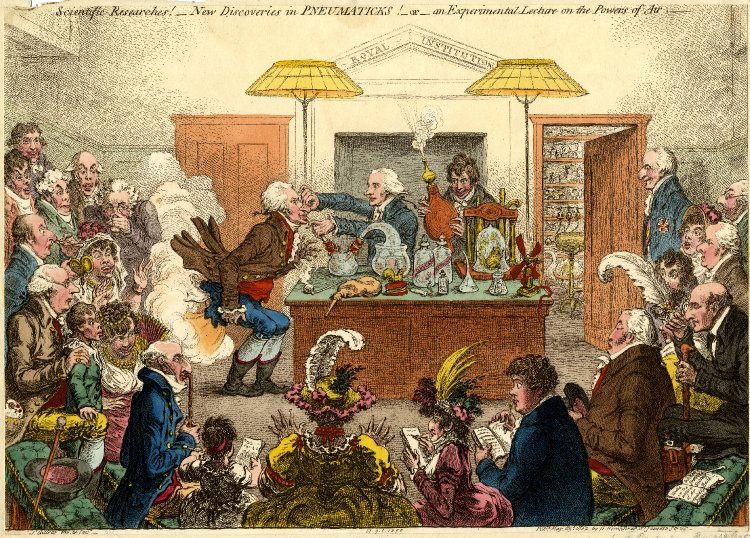
1802 satirical cartoon by James Gillray showing a Royal Institution lecture on pneumatics, with Davy holding the bellows and Count Rumford looking on at extreme right. Dr Garnett is the lecturer, holding the victim's nose.
On 25 April 1801, Davy gave his first lecture on the relatively new subject of 'Galvanism'. He and his good friend Coleridge had had many conversations about the nature of human knowledge and progress, and Davy's lectures gave his audience a vision of human civilization brought forward by scientific discovery. "It [science] has bestowed on him powers which may almost be called creative; which have enabled him to modify and change the beings surrounding him, and by his experiments to interrogate nature with power, not simply as a scholar, passive and seeking only to understand her operations, but rather as a master, active with his own instruments."[11] The first lecture garnered rave reviews, and by the June lecture Davy wrote to John King that his last lecture had attendance of nearly 500 people. "There was Respiration, Nitrous Oxide, and unbounded Applause. Amen!"[11]
Davy's lectures also included spectacular and sometimes dangerous chemical demonstrations for his audience, a generous helping of references to divine creation, and genuine scientific information. Not only a popular lecturer, the young and handsome Davy acquired a huge female following around London, and nearly half of the attendees pictured in Gillray's cartoon are female. When Davy's lecture series on Galvanism ended, he progressed to a new series on Agricultural Chemistry, and his popularity continued to skyrocket. By June 1802, after just over a year at the Institution and at the age of 23, Davy was nominated to full lecturer at the Royal Institution of Great Britain. Garnett quietly resigned, citing health reasons.[11]
In November 1804 Davy became a Fellow of the Royal Society, over which he would later preside. He was one of the founding members of the Geological Society in 1807[13] and was elected a foreign member of the Royal Swedish Academy of Sciences in 1810.
Discovery of new elements

Sodium metal, about 10 g, under oil

Magnesium metal crystals
Discovery of chlorine
Chlorine was discovered in 1774 by Swedish chemist Carl Wilhelm Scheele, who called it "dephlogisticated marine acid" (see phlogiston theory) and mistakenly thought it contained oxygen. Davey showed that the acid of Scheel's substance, called at the time oxymuriatic acid, contained no oxygen. This discovery overturned Lavoisier's definition of acids as compounds of oxygen. In 1810, chlorine was given its current name by Humphry Davy, who insisted that chlorine was in fact an element.[16]Popular public figure
Davy revelled in his public status, as his lectures gathered many spectators. He became well known due to his experiments with the physiological action of some gases, including laughing gas (nitrous oxide), once stating that its properties bestowed all of the benefits of alcohol but was devoid of its flaws.Davy later damaged his eyesight in a laboratory accident with nitrogen trichloride.[17] Pierre Louis Dulong first prepared this compound in 1812, and lost two fingers and an eye in two separate explosions with it. Davy's own accident induced him to hire Michael Faraday as a coworker.
European travels

Sir Humphry Davy, 1830 engraving based on the painting by Sir Thomas Lawrence (1769–1830)
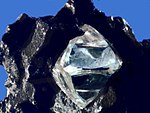
A diamond crystal in its matrix
The party left Paris in December 1813, travelling south to Italy.[20] They sojourned in Florence, where, in a series of experiments conducted with Faraday's assistance, Davy succeeded in using the sun's rays to ignite diamond, proving it is composed of pure carbon.
Davy's party continued to Rome, and also visited Naples and Mount Vesuvius. By June 1814, they were in Milan, where they met Alessandro Volta, and then continued north to Geneva. They returned to Italy via Munich and Innsbruck, and when their plans to travel to Greece and Istanbul were abandoned after Napoleon's escape from Elba, they returned to England.
Davy lamp
Main article: Davy lamp
After his return to England in 1815, Davy experimented with lamps for use in coal mines. There had been many mining explosions caused by firedamp or methane often ignited by open flames of the lamps then used by miners. In particular the Felling mine disaster in 1812 near Newcastle
caused great loss of life, and action was needed to improve underground
lighting and especially the lamps used by miners. Davy conceived of
using an iron gauze to enclose a lamp's flame, and so prevent the
methane burning inside the lamp from passing out to the general
atmosphere. Although the idea of the safety lamp had already been demonstrated by William Reid Clanny and by the then unknown (but later very famous) engineer George Stephenson,
Davy's use of wire gauze to prevent the spread of flame was used by
many other inventors in their later designs. George Stephenson's lamp
was very popular in the north-east coalfields, and used the same
principle of preventing the flame reaching the general atmosphere, but
by different means. Unfortunately, although the new design of gauze lamp
initially did seem to offer protection, it gave much less light, and
quickly deteriorated in the wet conditions of most pits. Rusting of the
gauze quickly made the lamp unsafe, and the number of deaths from
firedamp explosions rose yet further.There was some discussion as to whether Davy had discovered the principles behind his lamp without the help of the work of Smithson Tennant, but it was generally agreed that the work of both men had been independent. Davy refused to patent the lamp, and its invention led to him being awarded the Rumford medal in 1816.[1]
Acid-base studies
In 1815 Davy suggested that acids were substances that contained replaceable hydrogen – hydrogen that could be partly or totally replaced by metals. When acids reacted with metals they formed salts. Bases were substances that reacted with acids to form salts and water. These definitions worked well for most of the nineteenth century.[21]Last years and death
In January 1819, Davy was awarded a baronetcy. Although Sir Francis Bacon and Sir Isaac Newton had already been knighted, this was, at the time, the highest honour ever conferred on a man of science in Britain. A year later he became President of the Royal Society.Davy's laboratory assistant, Michael Faraday, went on to enhance Davy's work and in the end he became the more famous and influential scientist – to the extent that Davy is supposed to have claimed Faraday as his greatest discovery. However, Davy later accused Faraday of plagiarism, causing Faraday (the first Fullerian Professor of Chemistry) to cease all research in electromagnetism until his mentor's death.
Of a sanguine, somewhat irritable temperament, Davy displayed characteristic enthusiasm and energy in all his pursuits. As is shown by his verses and sometimes by his prose, his mind was highly imaginative; the poet Coleridge declared that if he “had not been the first chemist, he would have been the first poet of his age,” and Southey said that “he had all the elements of a poet; he only wanted the art.” In spite of his ungainly exterior and peculiar manner, his happy gifts of exposition and illustration won him extraordinary popularity as a lecturer, his experiments were ingenious and rapidly performed, and Coleridge went to hear him “to increase his stock of metaphors.” The dominating ambition of his life was to achieve fame, but though that sometimes betrayed him into petty jealousy, it did not leave him insensible to the claims on his knowledge of the “cause of humanity,” to use a phrase often employed by him in connection with his invention of the miners' lamp. Of the smaller observances of etiquette he was careless, and his frankness of disposition sometimes exposed him to annoyances which he might have avoided by the exercise of ordinary tact.[23]
According to one of Davy's biographers, June Z. Fullmer, he was a deist.[24]
After spending many months attempting to recuperate, Davy died in Switzerland in 1829 of heart disease inherited from his father's side of the family. He spent the last months of his life writing "Consolations In Travel", an immensely popular, somewhat freeform compendium of poetry, thoughts on science and philosophy (and even speculation concerning alien life) which became a staple of both scientific and family libraries for several decades afterward. He is buried in the Plainpalais Cemetery in Geneva.[25]
Legacy and honours
- A plaque to honour him is on the wall of the Royal Panopticon of Science and Arts in 1854.
- A lunar crater (Davy) is named after Sir Humphry Davy. It has a diameter of 34 km and coordinates of 11.8S, 8.1W.
- In his hometown of Penzance, Cornwall, a statue of Davy stands in front of the imposing Market House (now owned by Lloyds TSB) at the top of the town's main street Market Jew Street. Nearby is a house on which a commemorative plaque claims the location as the site of his birth.
- Penzance also has a secondary school named Humphry Davy School. Similar to James Prescott Joule and Isaac Newton, Davy is also remembered in his hometown by a pub – "The Sir Humphry Davy" at 32 Alverton Street, west of the Market House.
- Davy was the subject of the first ever clerihew.
- Davy was a founding Fellow of the Zoological Society of London
- A satellite of the University of Sheffield at Golden Smithies Lane in Wath upon Dearne (Manvers) was called Humphry Davy House and was home to the School of Nursing and Midwifery, until April 2009.
- There is a road, Humphry Davy Way, adjacent to the docks in Bristol named after Sir Humphry Davy.
- There is a street named after Sir Humphry Davy (Humphry-Davy-Straße) in the industrial quarter of the town of Cuxhaven, Schleswig-Holstein, Germany.
- The University of Plymouth has named one of its science buildings after the chemist
- The Royal Society of London has awarded the Davy Medal annually since 1877 "for an outstandingly important recent discovery in any branch of chemistry."
- Davy is the subject of a humorous song by Richard Gendall, recorded in 1980 by folk-singer Brenda Wootton, each verse of which recalls one of Davy's major discoveries.
- English playwright Nick Darke wrote Laughing Gas (2005) a comedy script about the life of Sir Humphry Davy, unfinished at the time of Nick Darke's death; completed posthumously by actor and playwright Carl Grose and produced by the Truro-based production company O-region.
- Davy's passion for outdoors and fly-fishing earned him title "father of modern fly-fishing" and his book Salmonia is often considered as "fly-fisherman bible".
Publications
| Library resources about Humphry Davy |
| By Humphry Davy |
|---|
Davy's books are as follows:
- Davy, Humphry (1800). Researches, Chemical and Philosophical. Bristol: Biggs and Cottle. ISBN 0-407-33150-6.
- — (1812). Elements of Chemical Philosophy. London: Johnson and Co. ISBN 0-217-88947-6.
- — (1813). Elements Of Agricultural Chemistry In A Course Of Lectures. London: Longman.
- — (1816). The Papers of Sir H. Davy. Newcastle: Emerson Charnley. (on Davy's safety lamp)
- — (1827). Discourses to the Royal Society. London: John Murray.
- — (1828). Salmonia or Days of Fly Fishing. London: John Murray.
- — (1830). Consolations in Travel or The Last Days of a Philosopher. London: John Murray.
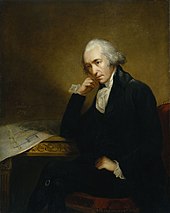
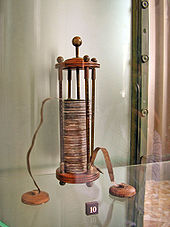


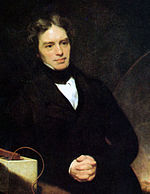

No comments:
Post a Comment
Please leave a comment-- or suggestions, particularly of topics and places you'd like to see covered